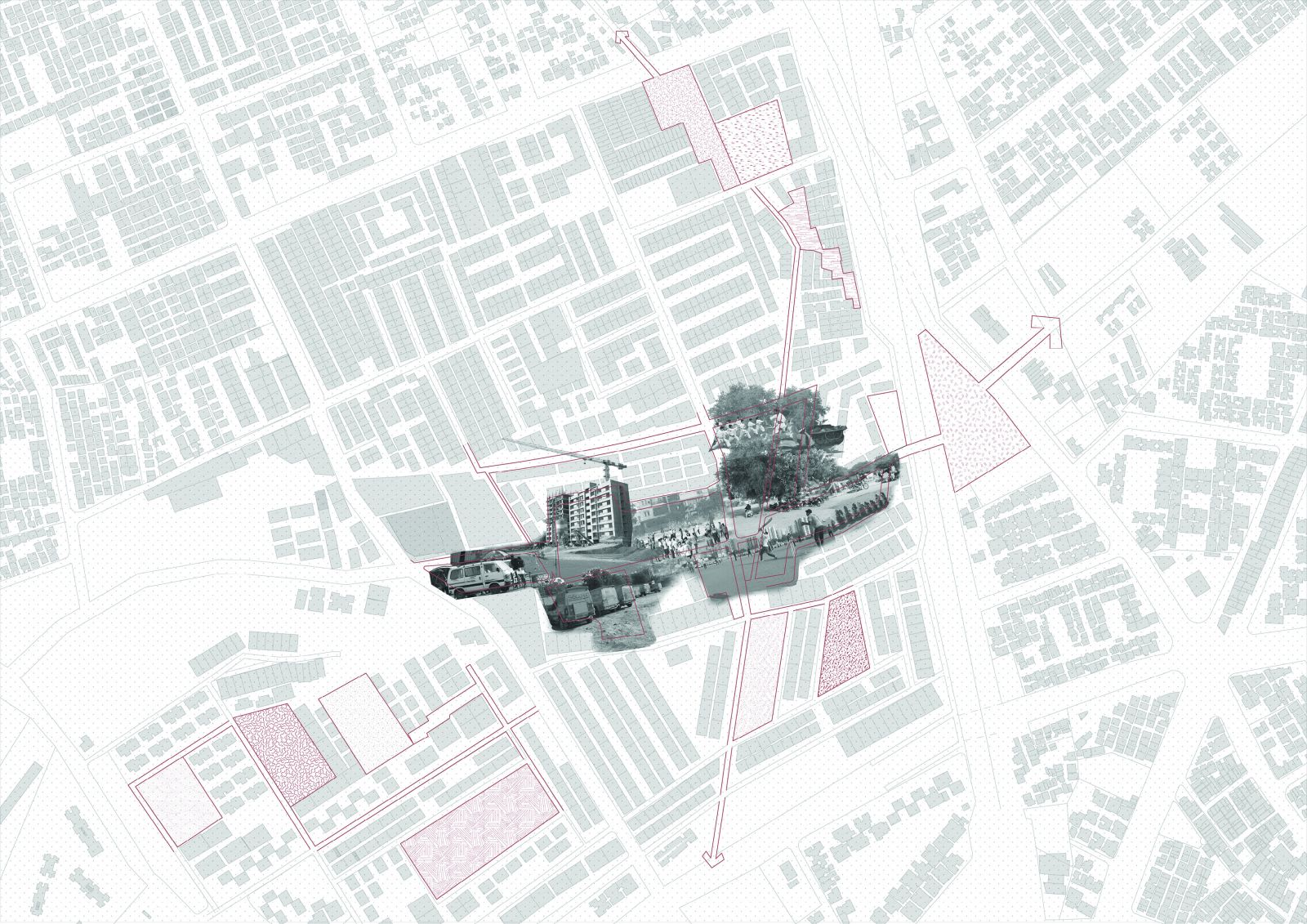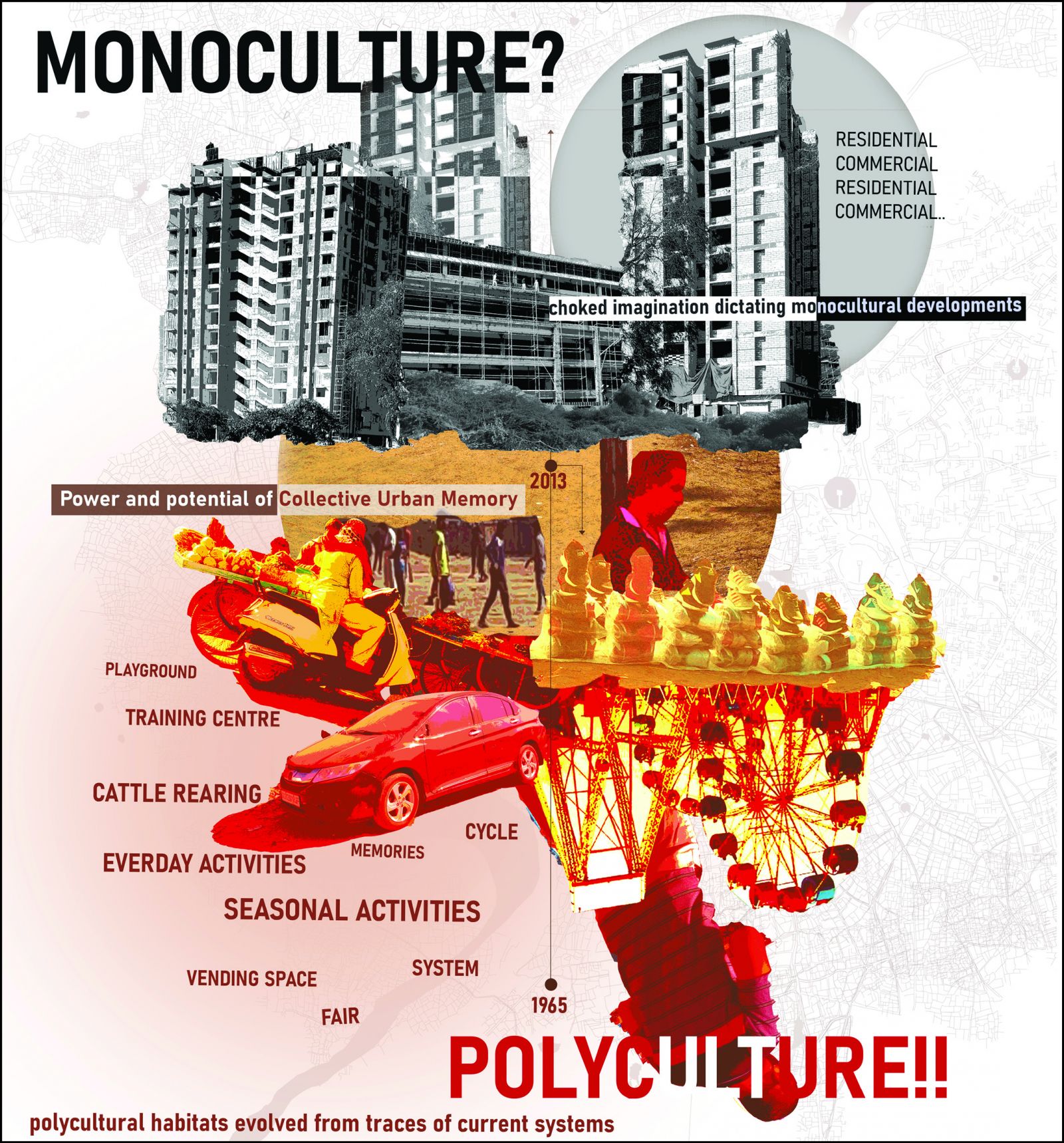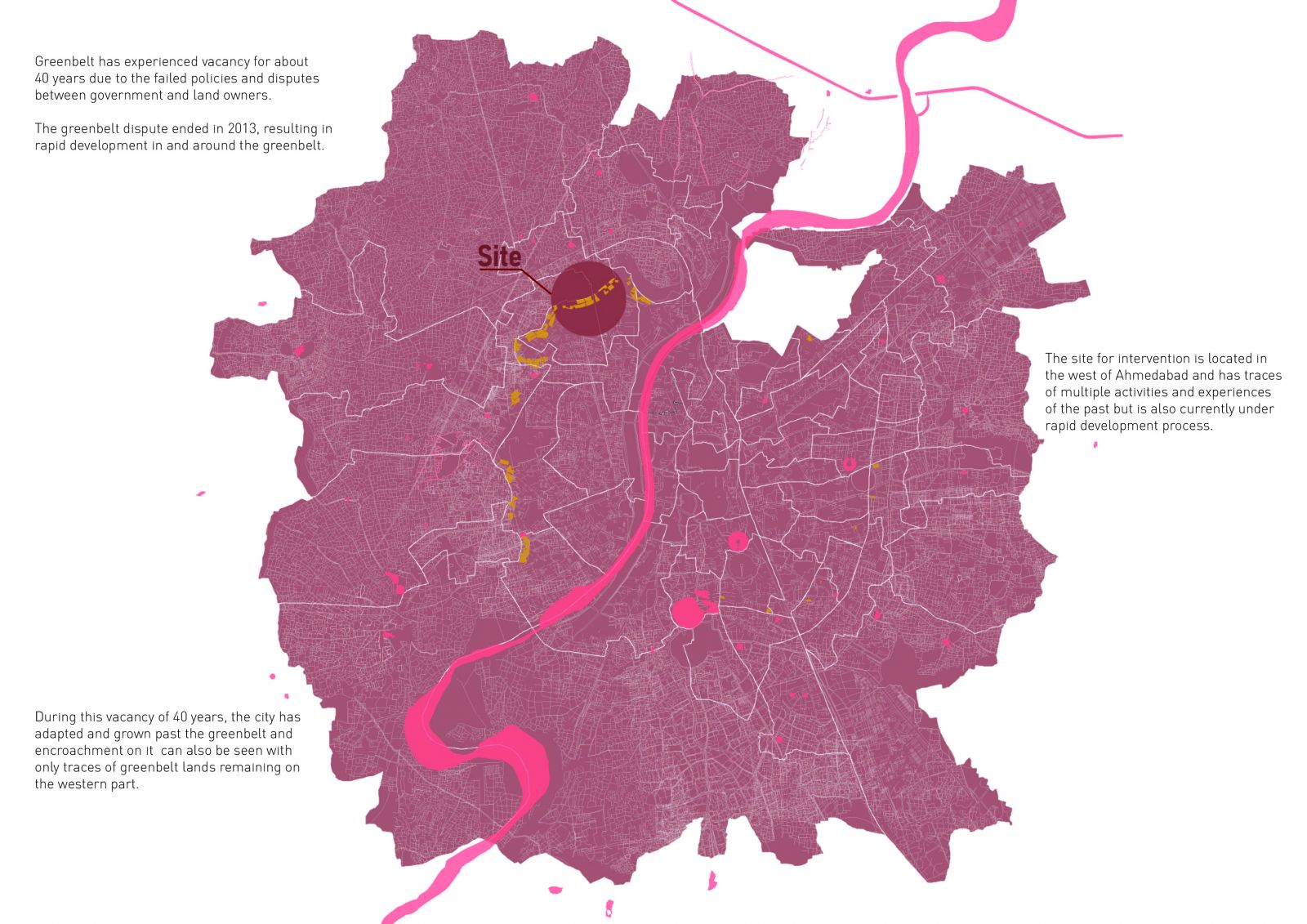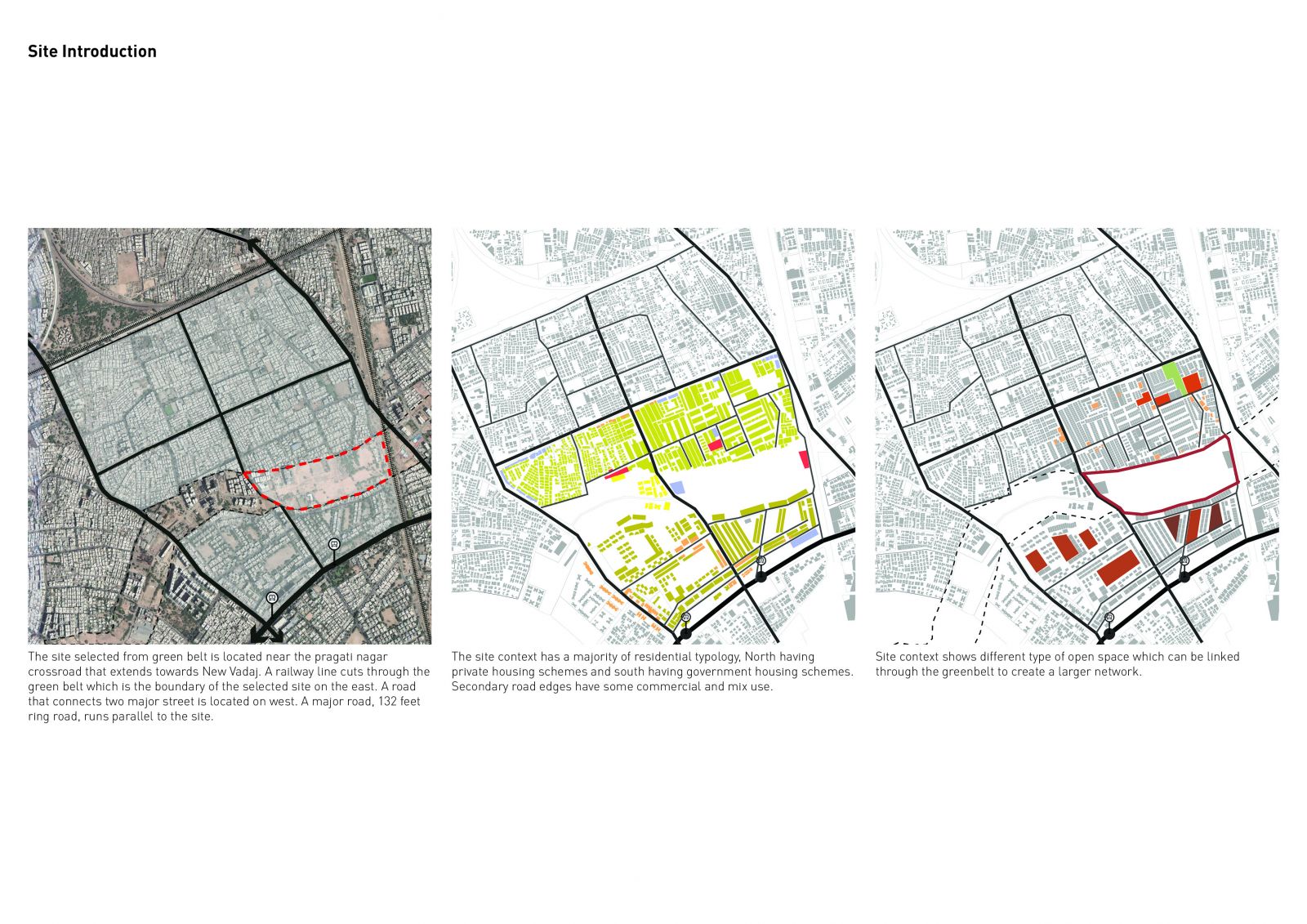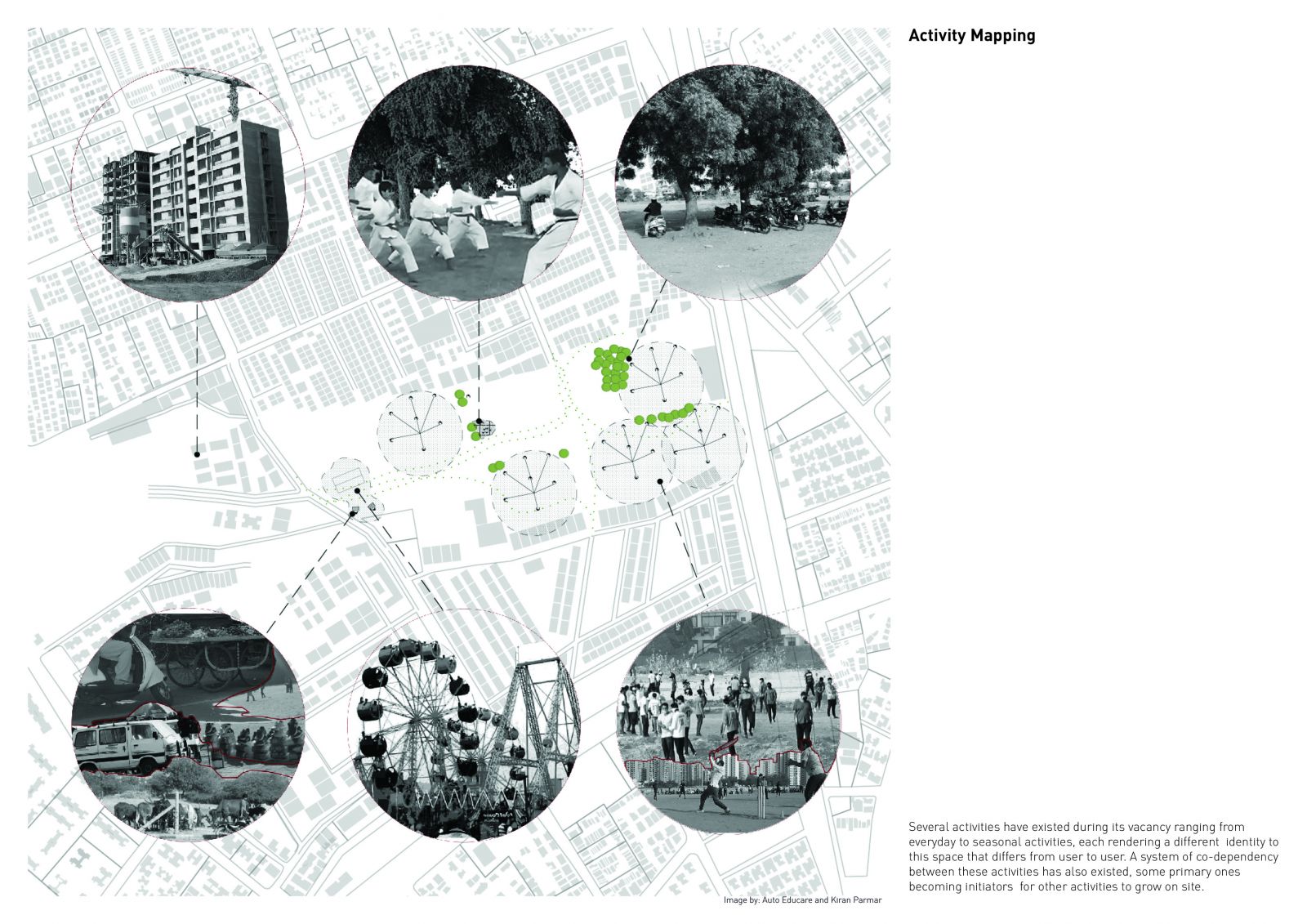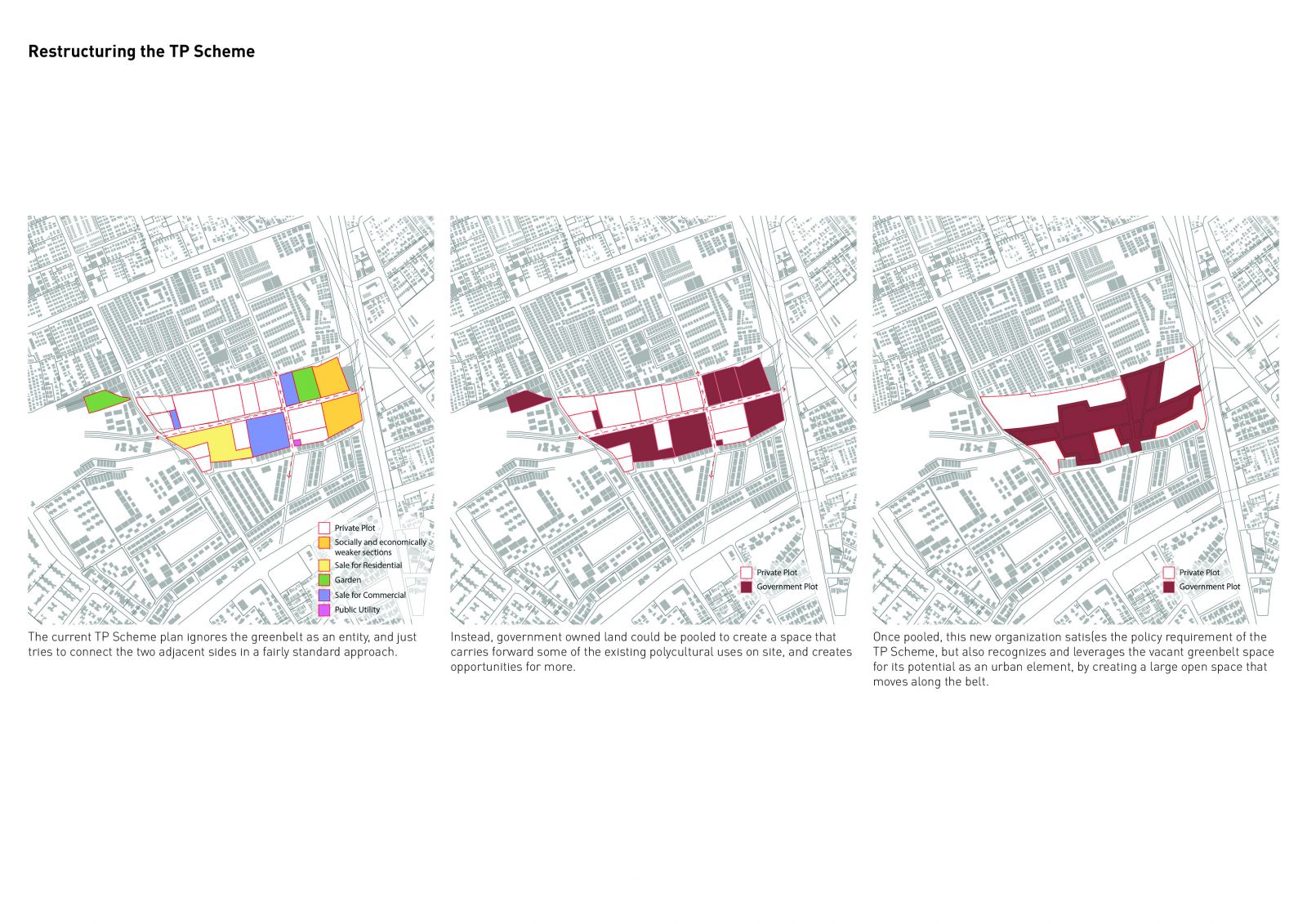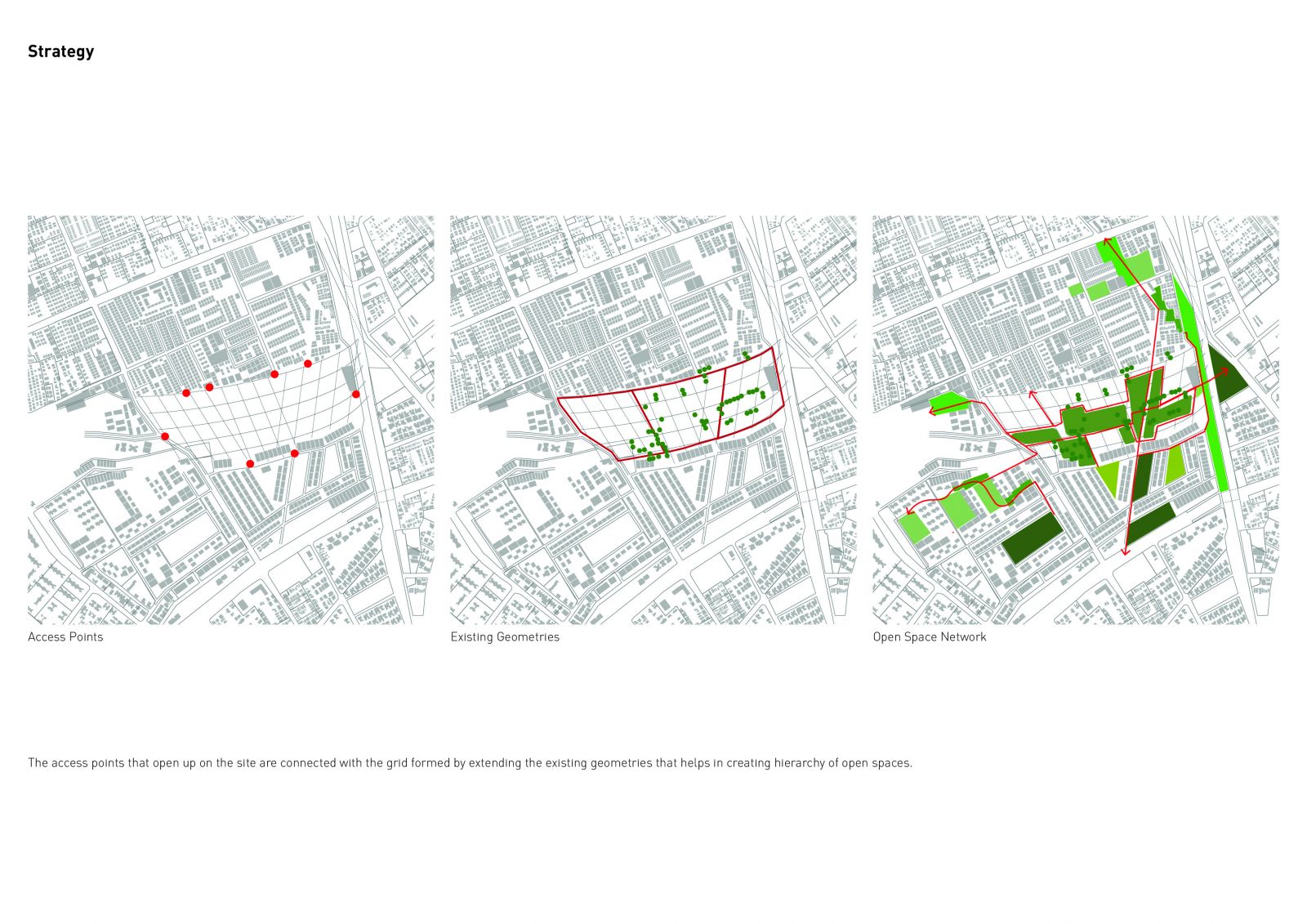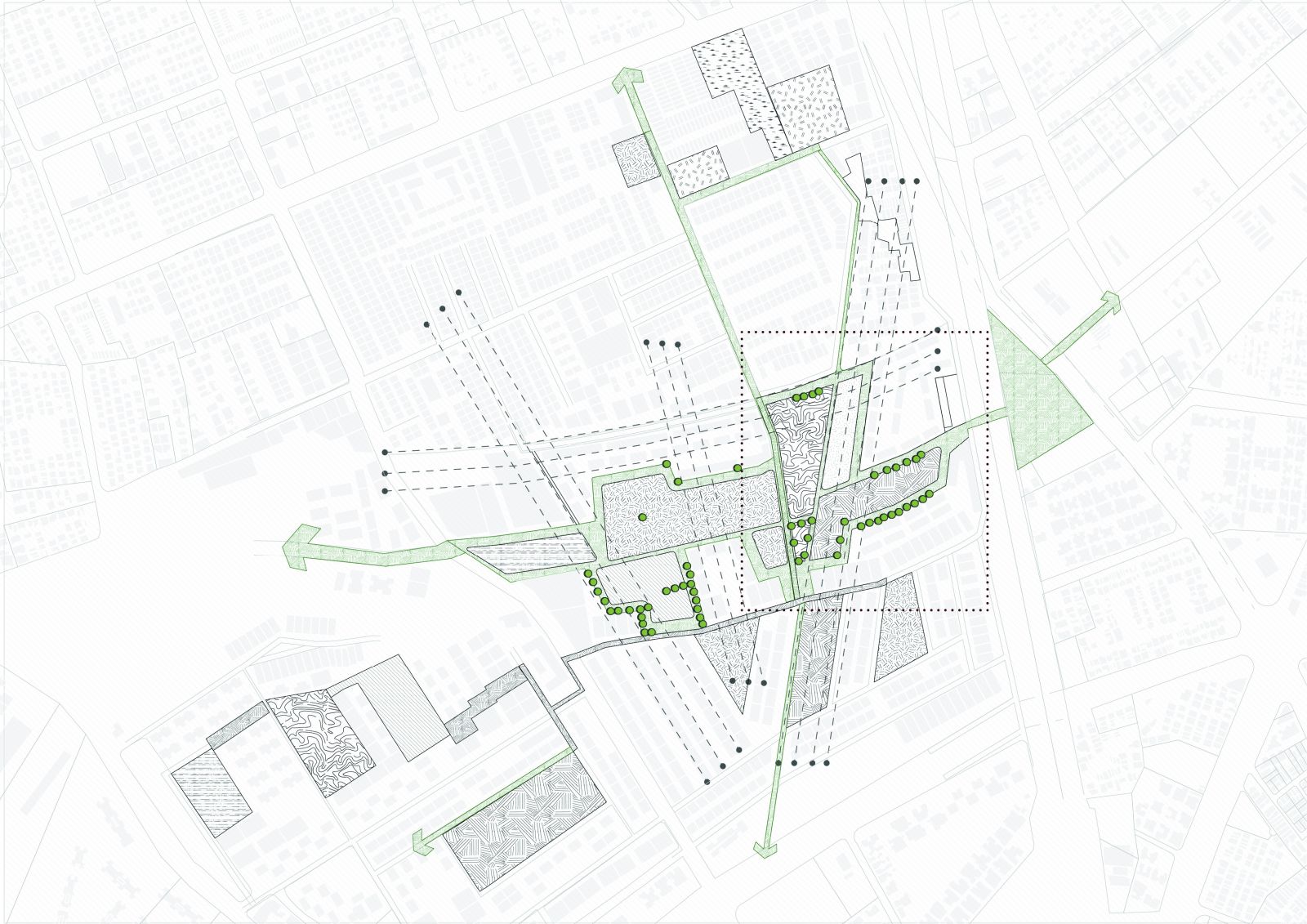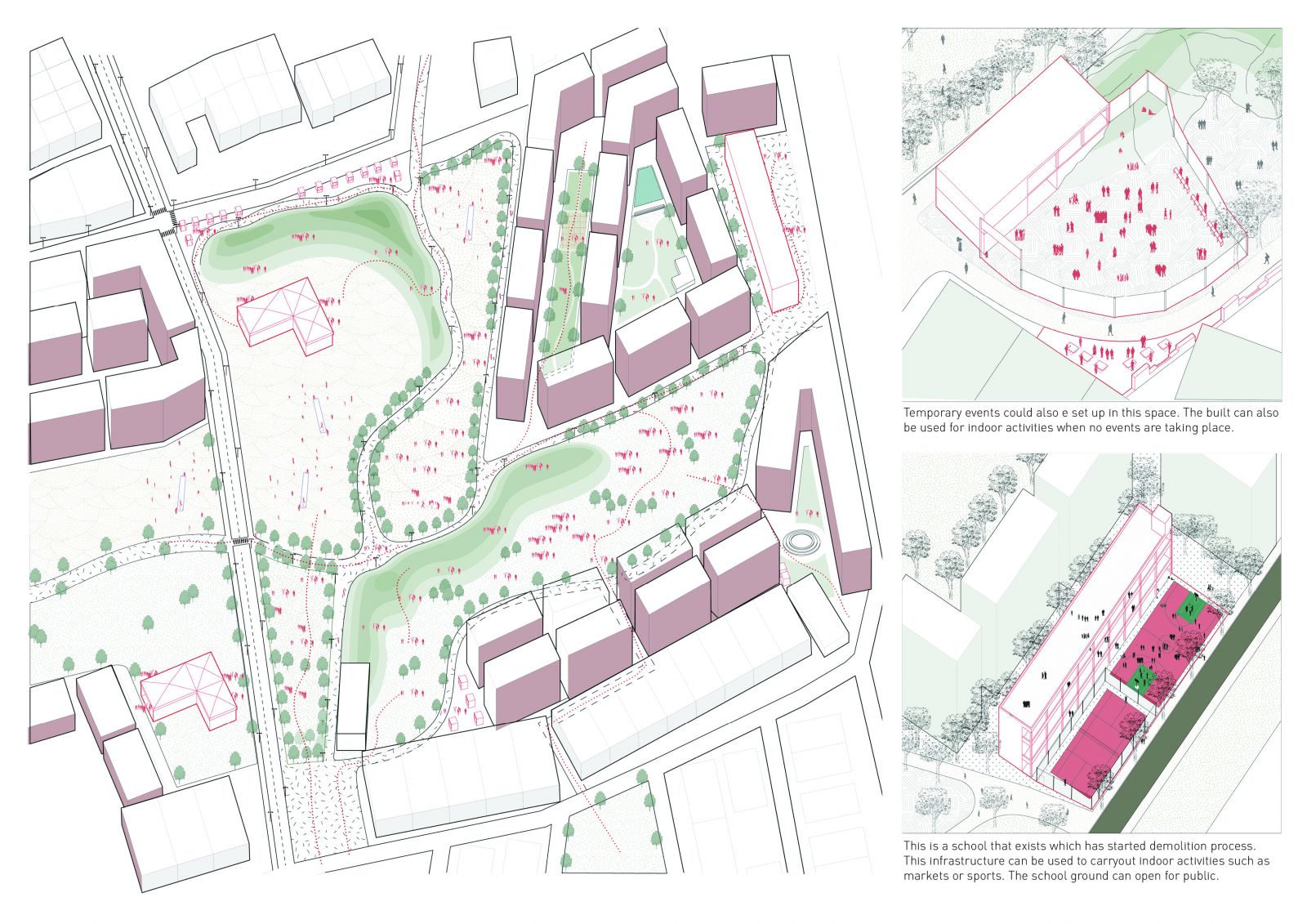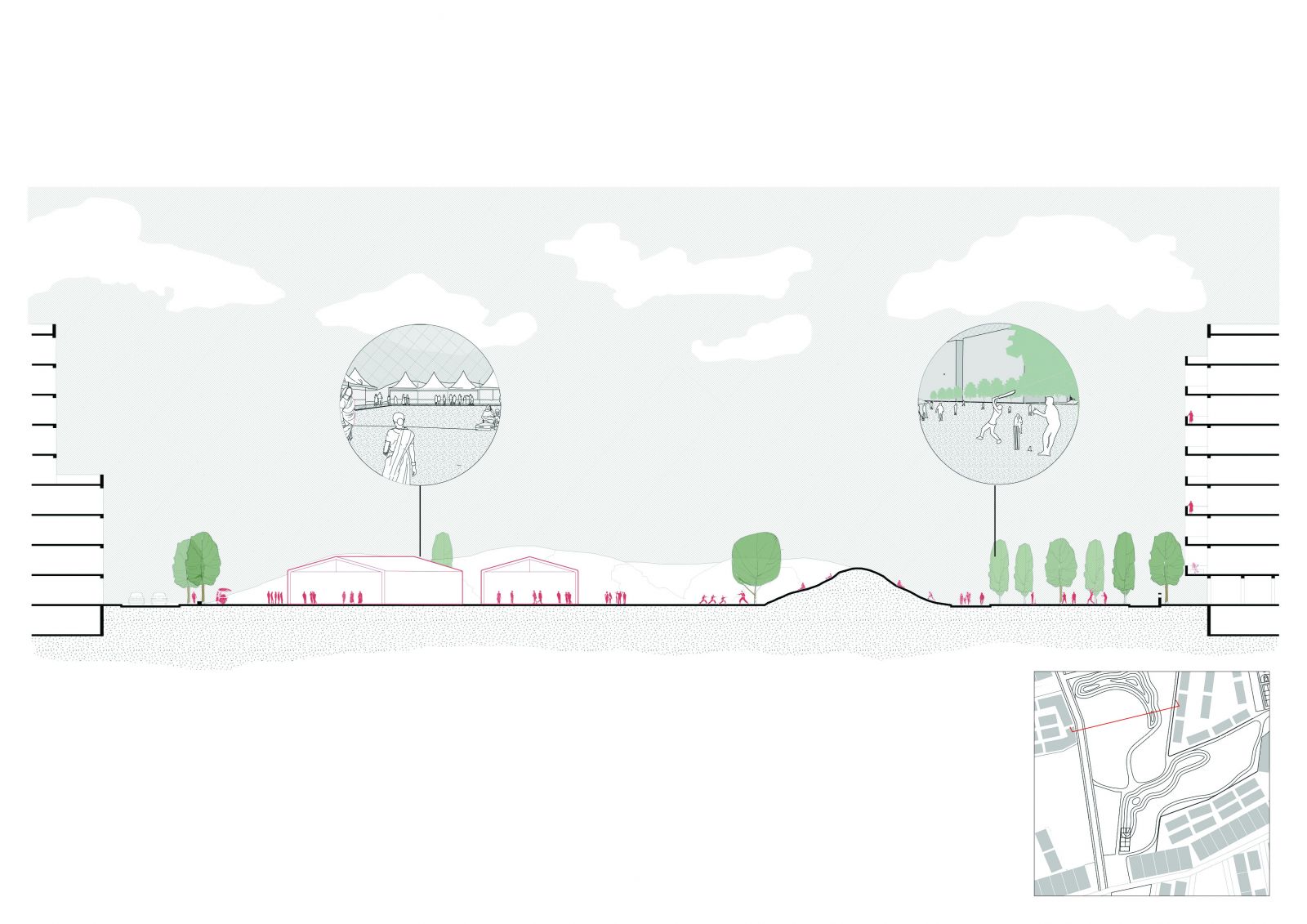Your browser is out-of-date!
For a richer surfing experience on our website, please update your browser. Update my browser now!
For a richer surfing experience on our website, please update your browser. Update my browser now!
Green belt policy of Ahmedabad produced lands that are associated with a lot of nostalgia amongst it’s users formed over the years due to its capacity to accommodate several kinds of activities, predominantly through it’s adaptability that allowed these parcels to renew their operation continuously and facilitate multiple overlapping functions. The TP scheme on the other hand overlooked this aspect to propose formal restructuring that allowed only rigid singular uses. This contrast disregards all the existing patterns which could be the potential catalyst towards making a more connected city. This project tries to retain all those urban memories and devises strategies for public spaces that could grow intelligently to other parts of the city through the network of open spaces over the coming decades.
View Additional Work